Richard Cromwell Worksheets
Do you want to save dozens of hours in time? Get your evenings and weekends back? Be able to teach about Richard Cromwell to your students?
Our worksheet bundle includes a fact file and printable worksheets and student activities. Perfect for both the classroom and homeschooling!
Resource Examples
Click any of the example images below to view a larger version.
Fact File
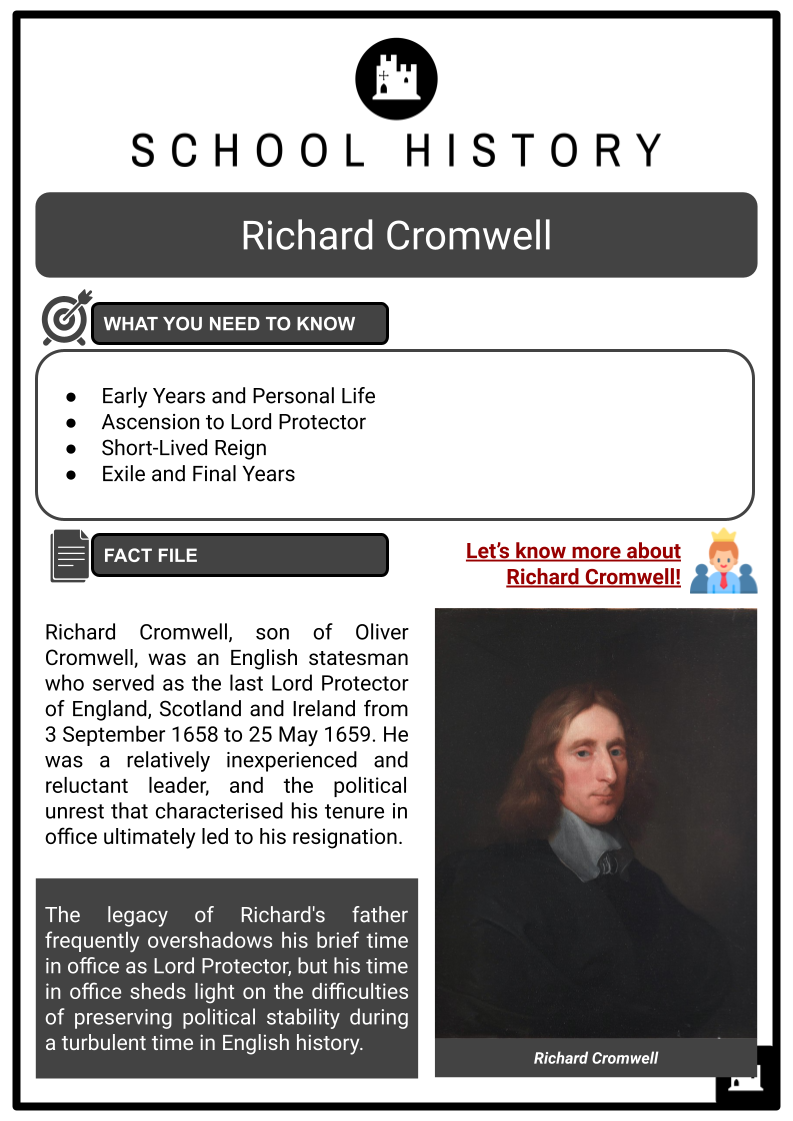
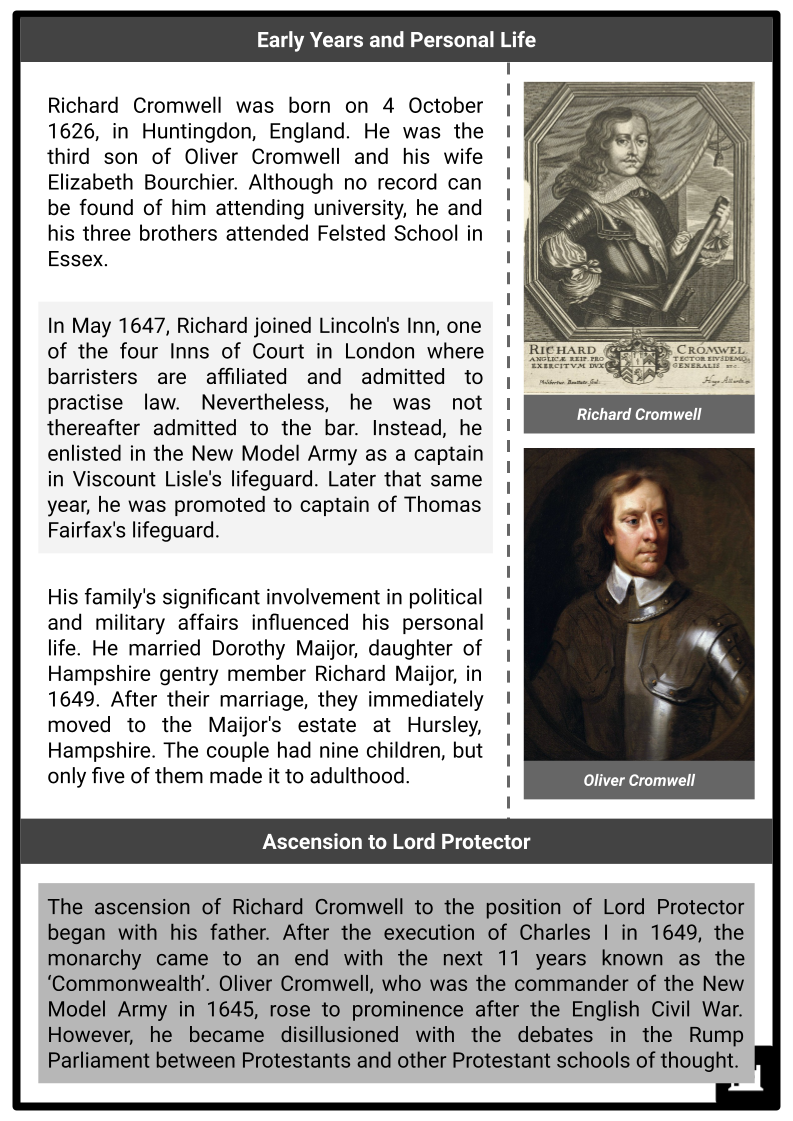
Student Activities
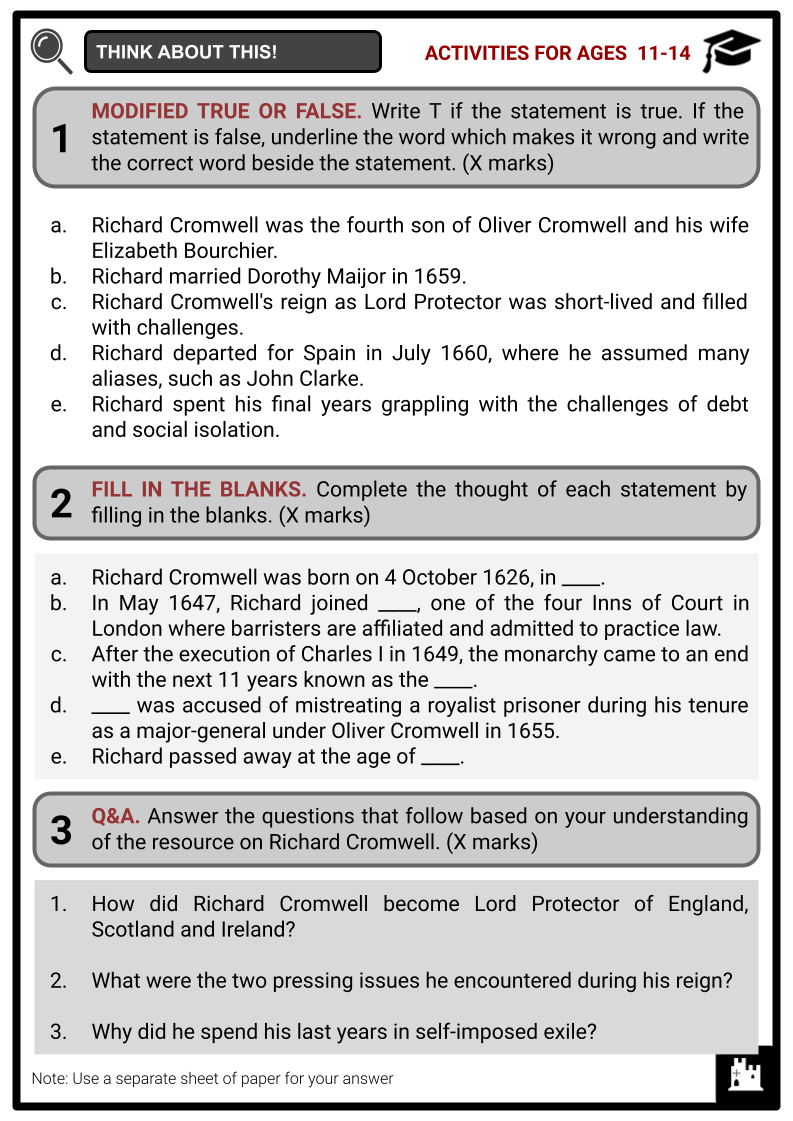
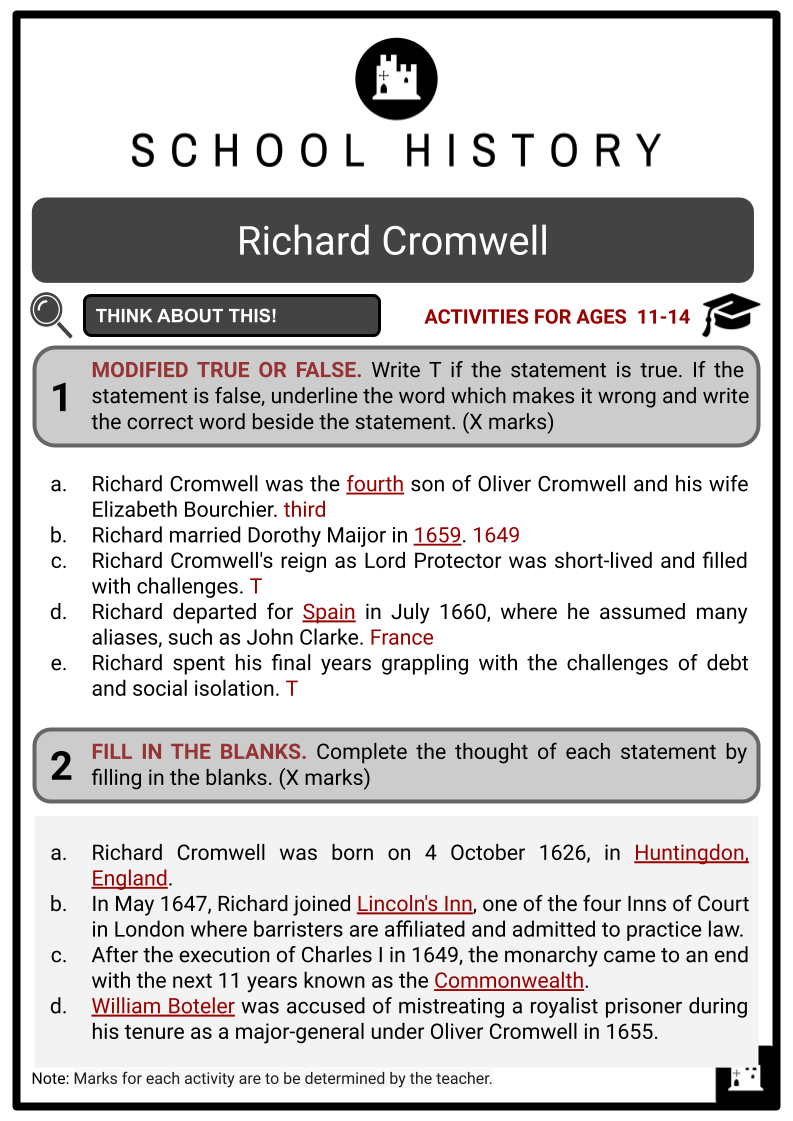
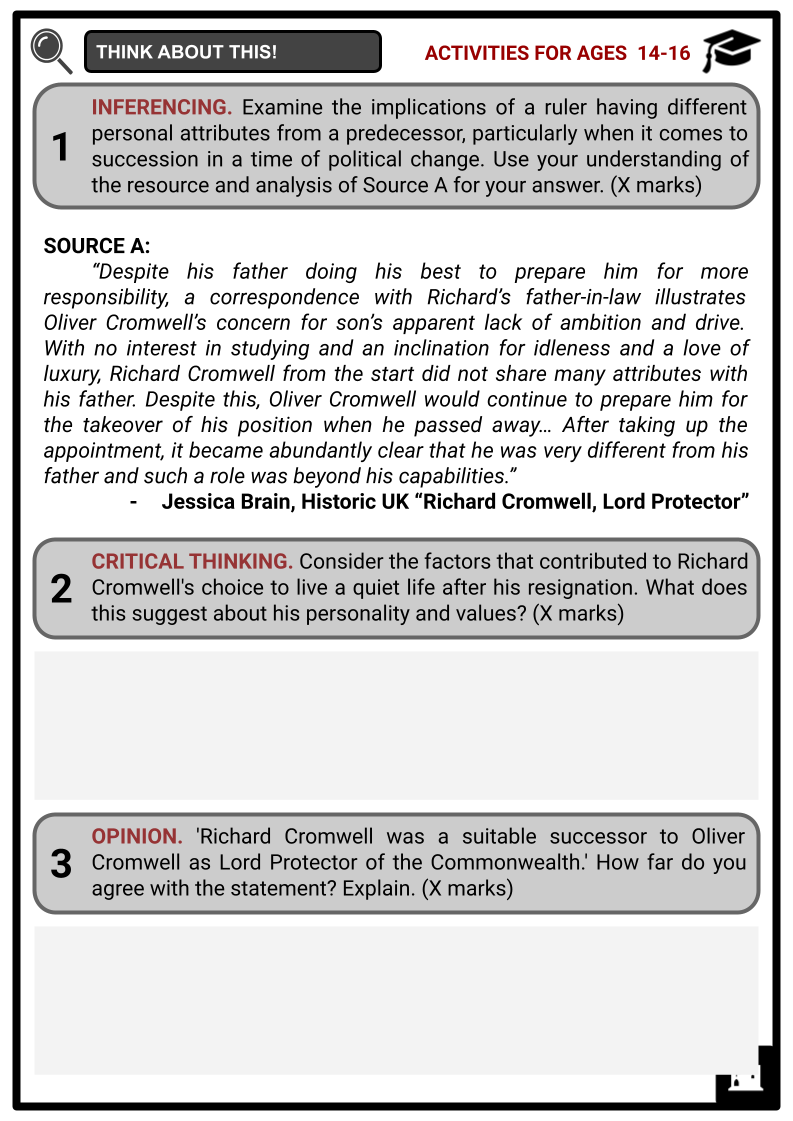
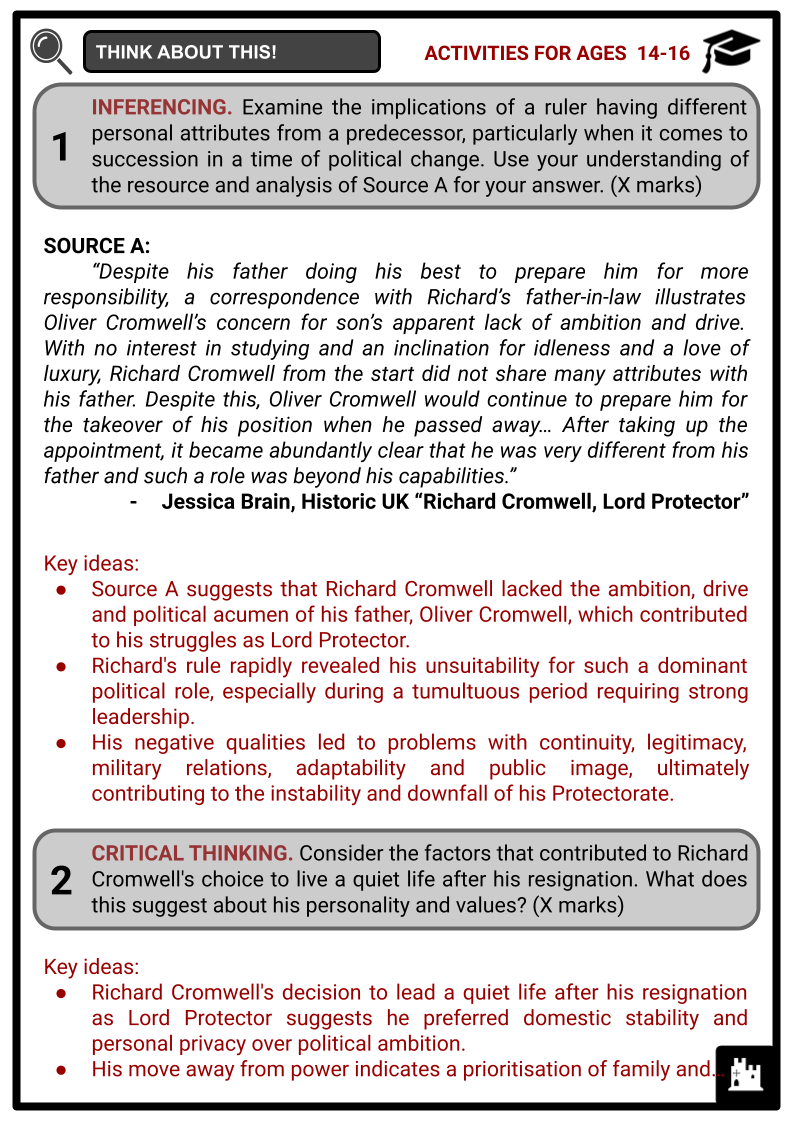
Summary
- Early Years and Personal Life
- Ascension to Lord Protector
- Short-Lived Reign
- Exile and Final Years
Key Facts And Information
Let’s know more about Richard Cromwell!
Richard Cromwell, son of Oliver Cromwell, was an English statesman who served as the last Lord Protector of England, Scotland and Ireland from 3 September 1658 to 25 May 1659. He was a relatively inexperienced and reluctant leader, and the political unrest that characterised his tenure in office ultimately led to his resignation.
The legacy of Richard's father frequently overshadows his brief time in office as Lord Protector, but his time in office sheds light on the difficulties of preserving political stability during a turbulent time in English history.
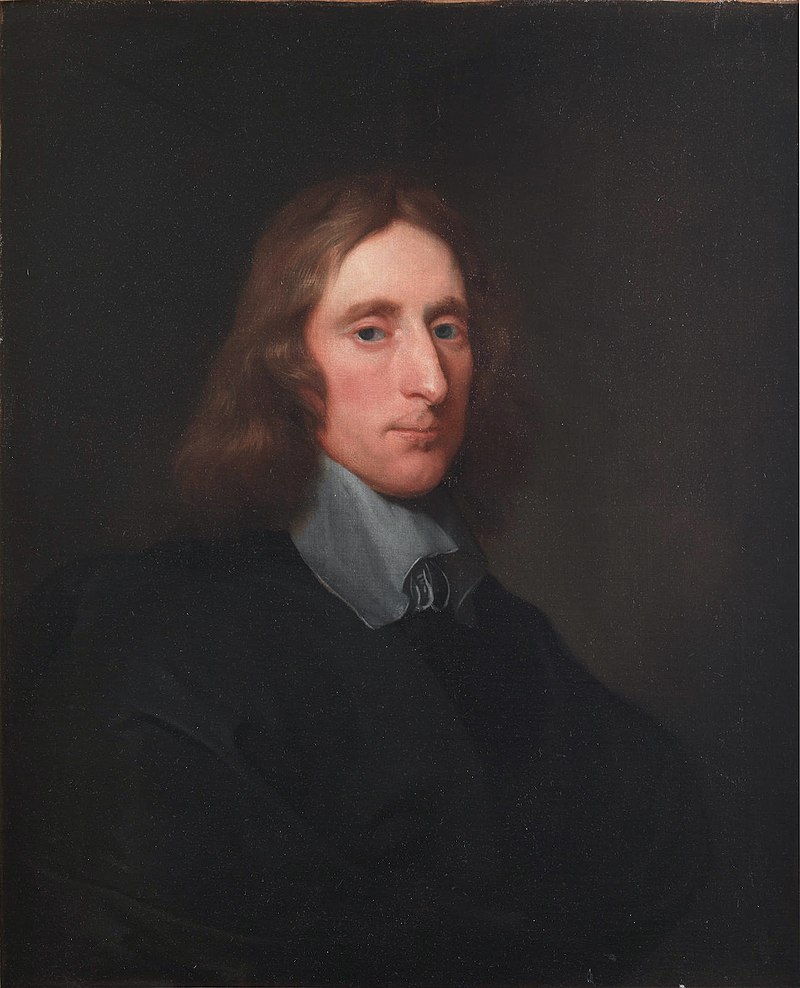
Early Years and Personal Life
- Richard Cromwell was born on 4 October 1626, in Huntingdon, England. He was the third son of Oliver Cromwell and his wife Elizabeth Bourchier. Although no record can be found of him attending university, he and his three brothers attended Felsted School in Essex.
- In May 1647, Richard joined Lincoln's Inn, one of the four Inns of Court in London where barristers are affiliated and admitted to practise law. Nevertheless, he was not thereafter admitted to the bar. Instead, he enlisted in the New Model Army as a captain in Viscount Lisle's lifeguard. Later that same year, he was promoted to captain of Thomas Fairfax's lifeguard.
- His family's significant involvement in political and military affairs influenced his personal life. He married Dorothy Maijor, daughter of Hampshire gentry member Richard Maijor, in 1649. After their marriage, they immediately moved to the Maijor's estate at Hursley, Hampshire. The couple had nine children, but only five of them made it to adulthood.
Ascension to Lord Protector
- The ascension of Richard Cromwell to the position of Lord Protector began with his father. After the execution of Charles I in 1649, the monarchy came to an end with the next 11 years known as the ‘Commonwealth’. Oliver Cromwell, who was the commander of the New Model Army in 1645, rose to prominence after the English Civil War. However, he became disillusioned with the debates in the Rump Parliament between Protestants and other Protestant schools of thought.
- Oliver attempted to reform the government through Barebone's Parliament, but the proposals were too radical. A written constitution then created the position of Lord Protector for Oliver, who ruled with all the powers of a monarch starting in 1653. Many of his supporters were Puritans who wanted to get rid of anything sinful.
- This led to very strict rules about what people could and could not do:
- Celebrating Christmas was frowned upon.
- Women were not allowed to wear jewellery or make-up.
- Walking anywhere on a Sunday except to church was forbidden.
- All theatres were shut down.
- Most pubs and inns in England were closed.
- Dancing was punishable by being put in the stocks.
- Richard Cromwell was elected to the First Protectorate Parliament as MP for Huntingdon and the Second Protectorate Parliament as MP for Cambridge University. Under the Protectorate's constitution, Oliver was required to nominate a successor, and from 1657 on, he involved Richard more heavily in the regime's politics.
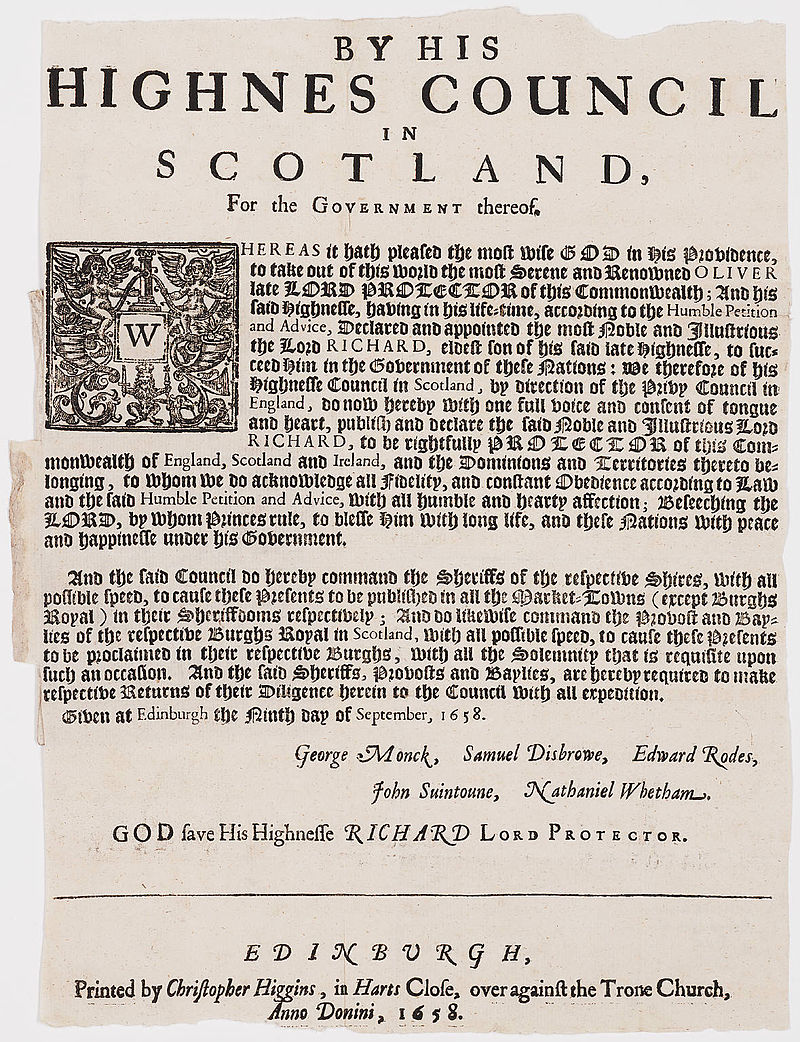
- Richard was present at the second installation of his father as Lord Protector in June, was appointed chancellor of Oxford University in July, and was made a member of the Council of State in December.
- When Oliver passed away on 3 September 1658, Richard was promptly notified on the same day that he would be taking over as his successor. There is, however, some dispute surrounding the succession. According to a letter written by John Thurloe, it is suggested that Richard verbally nominated his son on 30 August.
- However, alternative hypotheses propose that he either did not designate a successor or that he proposed Charles Fleetwood, his son-in-law. Nevertheless, Richard was declared his successor and served as Lord Protector of the Commonwealth of England, Scotland and Ireland from September 1658 until May 1659.
Short-Lived Reign
- Richard Cromwell's reign as Lord Protector was short-lived and filled with challenges. He faced difficulties in maintaining control and opposition from various factions within the government and military. Unlike his father, Richard did not have a military background and was seen as largely politically inexperienced.
- Richard encountered two pressing issues during his reign:
- The army scrutinising his authority as commander due to his little military background, and
- The regime's precarious financial situation with a debt amounting to an estimated £2 million.
- The Privy Council of Richard made the decision to convene a parliament on 29 November 1658 in order to discuss and resolve the financial issues. This decision was officially ratified on 3 December 1658.
- The Third Protectorate Parliament was convened on 27 January 1659, with a majority of moderate Presbyterians, crypto-royalists, and a minority of Republicans. The 'Other House' of Parliament, which was created under the Humble Petition and Advice Act to serve as a counterbalance to the Commons, was also reinstated.
- Republican dissidents raised concerns about the insufficiency of the members in this higher legislative body, specifically its military representation, and whether it reflected the decline of the Protectorate regime as a whole and its deviation from the original purpose for which parliamentarians had fought in the civil war.
- The officers of the New Model Army grew increasingly cautious about the government's dedication to the military cause, as the new Parliament appeared to lack regard for the army. The army then sought to assert its power under the direction of General George Monck because it was dissatisfied with Richard's leadership.
- On 6 April 1659, a petition expressing concerns about potential military budget reductions in Parliament was presented to Richard, who then promptly delivered it to Parliament two days later. Nevertheless, Parliament disregarded the army's recommendations and further intensified their distrust of the military by initiating impeachment proceedings against William Boteler. Boteler was accused of mistreating a royalist prisoner during his tenure as a major-general under Oliver Cromwell in 1655.
- The ultimate division between the army and the Parliament, which was under civilian control, resulted from these overt challenges to the military's reputation. This division eventually led to the dissolution of Parliament and Richard's eventual loss of power.
- In the same month, Richard declined a proposal of military support from the French envoy, maybe due to his confinement by the troops. On 25 May, following Rump's agreement to settle his debts and grant him a pension, Richard submitted a formal letter resigning from the position of Lord Protector. His reign came to an end after only less than a year in power.
Exile and Final Years
- During a period of political turmoil in 1659, there were rumours circulating that Richard, who held the position of Protector, might be called back from his role. Nevertheless, these rumours were baseless, and Richard departed for France in July 1660, where he assumed many aliases, such as John Clarke.
- With the dissolution of the Protectorate, Richard inherited substantial debts from his father's administration. Although the Rump Parliament's settlement offered some financial relief, it was obvious that his life was about to take a turn for the worse. In the aftermath of his resignation, Richard chose to live a quiet life away from the political tumult that had defined his time as Lord Protector. Subsequently, he embarked on a journey across Europe, where he visited different European royal households.
- While in self-imposed exile, he corresponded with his family in England by writing letters, which are currently preserved in the Cambridgeshire Archives and Local Studies. Despite his hope to find solace and peace in the countryside, his financial troubles persisted, and he struggled to maintain his family's former lifestyle. He spent his final years grappling with the challenges of debt and social isolation. He arrived back in England in either 1680 or 1681 and stayed with the merchant Thomas Pengelly in Cheshunt, Hertfordshire.
- Richard passed away at the age of 85 on 12 July 1712. His remains were brought back to Hursley and laid to rest in a burial chamber beneath All Saints' Parish Church. He held the record for being the British head of state with the longest lifespan in the past 300 years, surpassing both George III and Queen Victoria. His death marked the end of a tumultuous and ultimately tragic chapter in the history of the Cromwell family.
Image Sources
- https://upload.wikimedia.org/wikipedia/commons/thumb/4/4d/Richard_Cromwell_%281626-1712%29%2C_by_Gerard_Soest.jpg/800px-Richard_Cromwell_%281626-1712%29%2C_by_Gerard_Soest.jpg
- https://upload.wikimedia.org/wikipedia/commons/thumb/4/4a/By_His_Highnes_Council_in_Scotland%2C_for_the_government_thereof_Edinburgh_1658.jpg/800px-By_His_Highnes_Council_in_Scotland%2C_for_the_government_thereof_Edinburgh_1658.jpg
Frequently Asked Questions
- Who was Richard Cromwell?
Richard Cromwell was the third son of Oliver Cromwell, the Lord Protector of England, Scotland, and Ireland during the Commonwealth period.
- How long was Richard Cromwell in power as Lord Protector?
Richard Cromwell served as Lord Protector for only nine months, from September 1658 to May 1659.
- What led to Richard Cromwell's downfall?
Richard Cromwell faced challenges from political factions within the Commonwealth, particularly from the army and Parliament, which ultimately led to his resignation.
